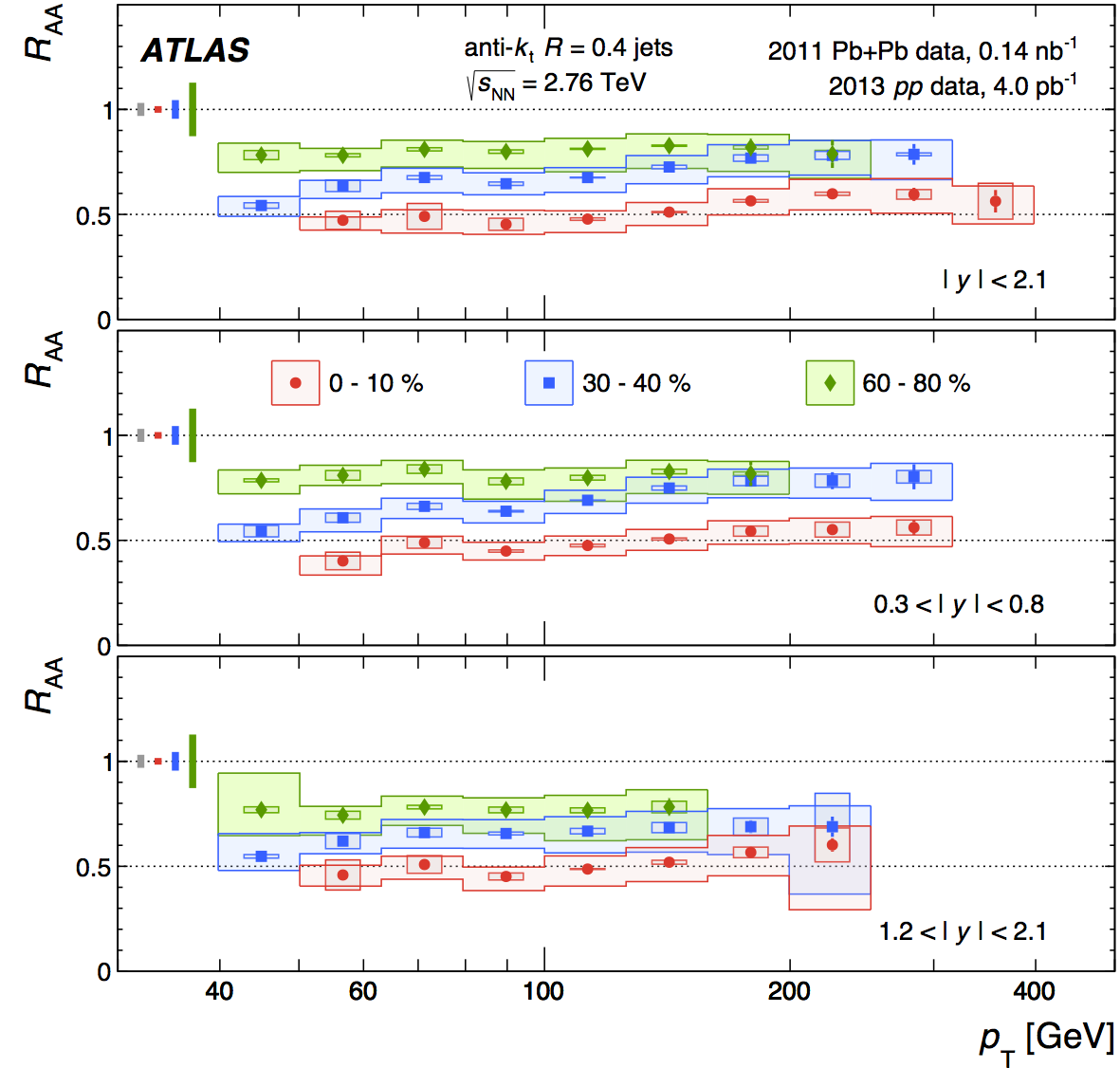Quenching jets in the hot dense matter produced by colliding lead ions
13 November 2014 | By

The Large Hadron Collider is known to collide protons, but for one month a year, beams of lead ions are circulated in the 27-km tunnel and made to collide in the centre of the experiments. The ATLAS experiment has made new precise measurements of the suppression of jets as they blast through the dense matter created by the lead ion collisions.
Ordinary matter is made up of quarks confined inside protons and neutrons by gluons, the carrier of the strong nuclear force. At extremely high temperatures – almost a billion times hotter than the sun – a dense form of matter emerges called the quark-gluon plasma (QGP). This plasma filled up the universe for several millionths of a second after the Big Bang. It is produced during ultra-high energy ion collisions like those at the Large Hadron Collider.
High-energy quarks and gluons produced in “hard scattering” processes during the initial stages of an ion collision can lose energy as they bore through the QGP. They fragment into highly collimated sprays of particles known as jets. As the quarks and gluons lose energy, their transverse momentum, or pT, is reduced. This phenomenon is called jet quenching.
Jets are also produced in proton-proton collisions but there is no such energy loss as no QGP formation is expected. Measurements of such jets thus serve as an essential reference to calibrate the effects of jet quenching. The ratio, RAA, of the number of jets at a given transverse momentum measured in lead-lead collisions, compared to the expected number of jets in proton-proton collisions, quantifies how much the jet yield has been suppressed; it, thus, provides a useful measure of jet quenching.
The ATLAS measurement compared data of 2.76 TeV lead ion collisions taken in 2011 with data taken during a dedicated run of the LHC in 2013 of proton-proton collisions of the same energy. The measurement shows that only half as many jets are produced in “central” lead-lead collisions where the lead ions slam directly into each other, overlapping nearly completely, and the medium produced is the hottest as compared with proton-proton collisions. This measurement will be essential in constraining theoretical descriptions of the energy loss mechanism and provide insight into the properties of the plasma and how those properties emerge from Quantum Chromodynamics, the theory that explains the interaction of quarks and gluons.



